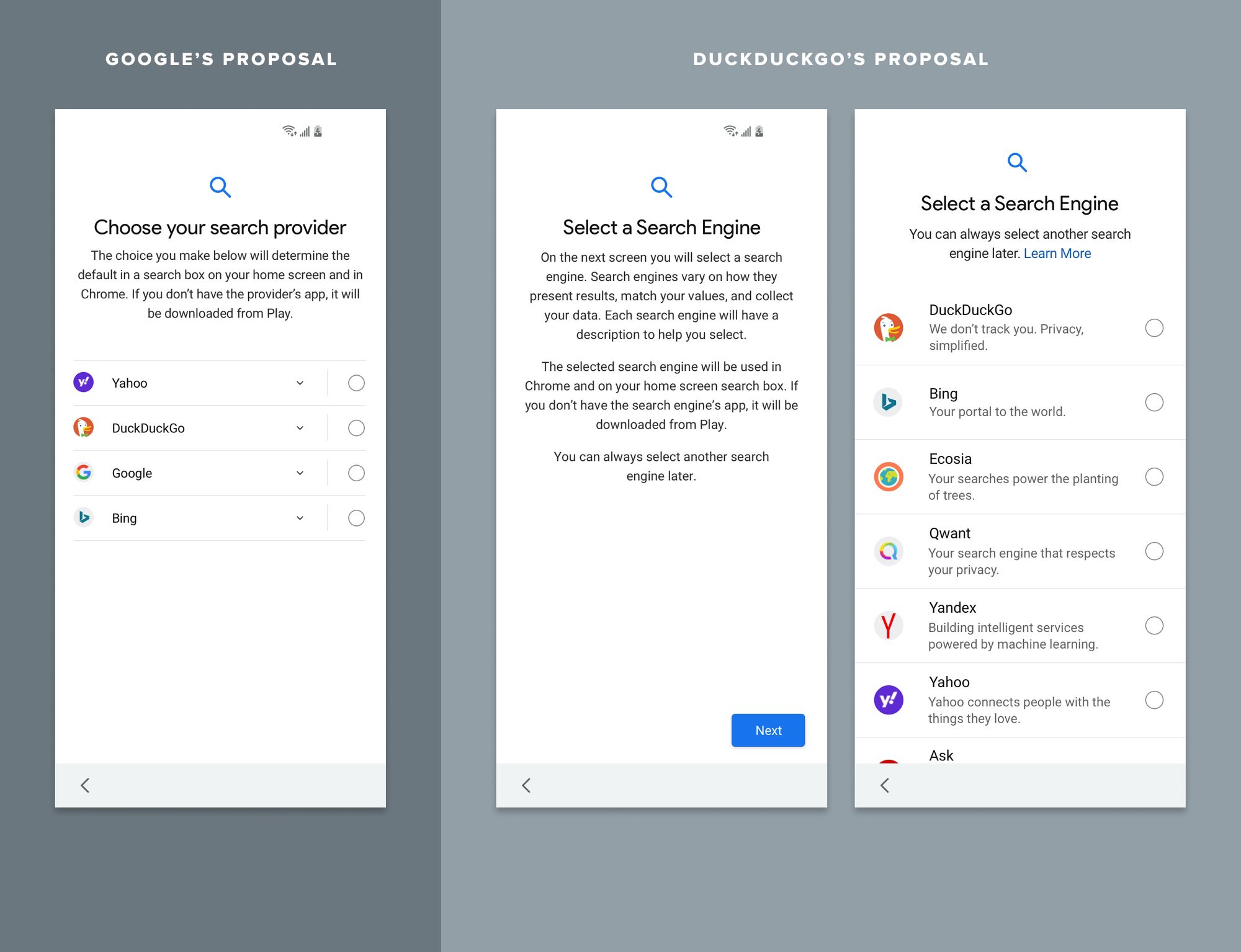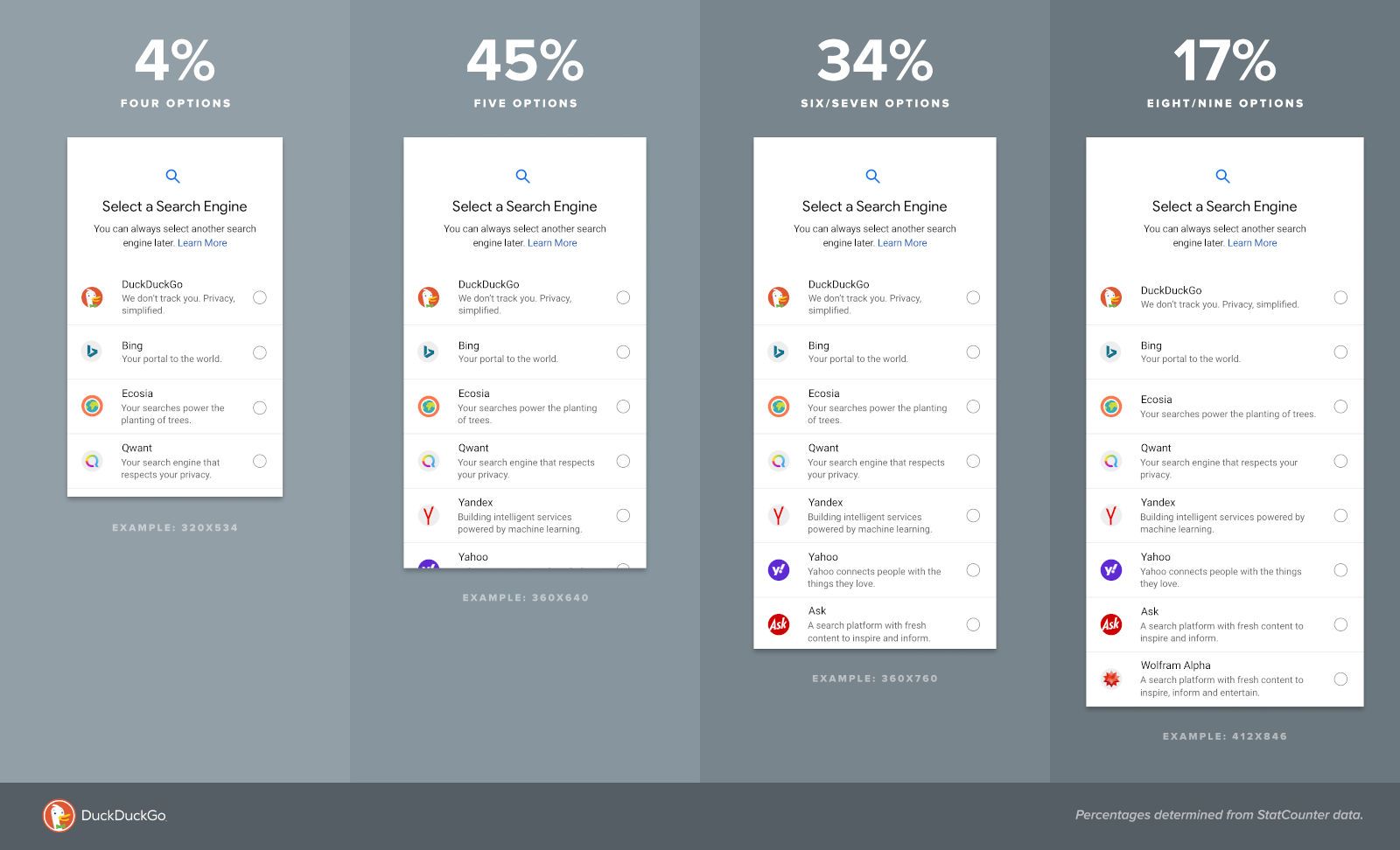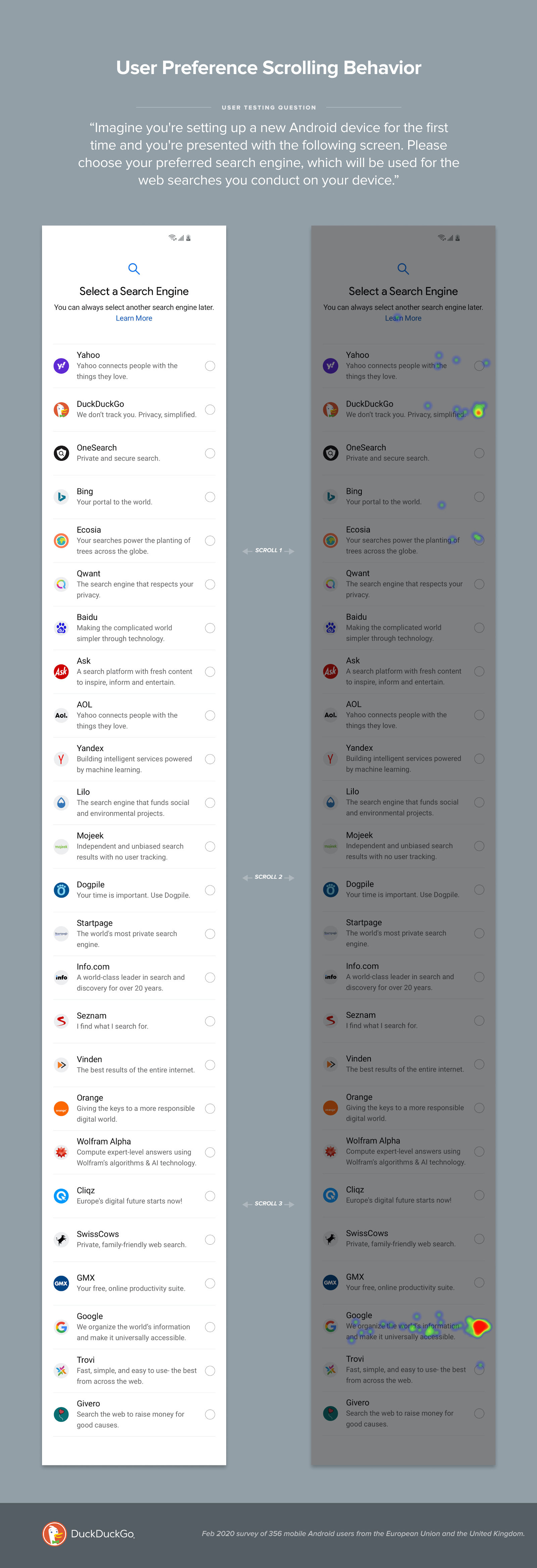Search Preference Menus: Google Auction Ignores Screen Size and Scrolling
This is the fourth in our series of posts about search preference menus.
- DuckDuckGo has researched market conditions and user behavior on search preference menus for submission to the UK Competition and Markets Authority and European Commission.
- User testing shows that over 60% of people scroll past a first screen to see more search alternatives, and that increases to 80% if Google is not on the first screen.
- Using our proposed design, 24% of Europeans choose a Google alternative, which is 8 times higher than the 3% today.
- 96% of Android phones in Europe can display 5 search engines on the first screen, and 51% can display 6 or more, while still showing descriptions for all. Just 4% can only display 4 options.
As part of ongoing discussions about search preference menus with the UK Competition and Markets Authority (CMA) and European Commission (EC), today we are providing data that answers two questions about our proposal (depicted below):
- How many search engines can fit on typical Android phone screens for devices sold in Europe?
- Will people scroll to see search engines beyond the first screen?

As explained in the first post of this series, we believe search preference menus — ones that change all search defaults and include the most common Google alternatives — can deliver meaningful search engine choice to consumers and significantly increase competition in the search market. In short, it's a great tool when done right.
However, Google’s search preference menu for the European Union is designed in a way that undercuts the very reason it was created, making it harder than necessary for people to choose an alternative. As a result, in the second post of this series we proposed a number of design improvements to Google's search preference menu.
Central to our suggested design improvements is significantly increasing the number of search engines options from just four, which Google has made artificially low because they are extracting money from the preference menu via an auction format (alternative search engines must bid for placement). We strongly believe it is in the best interest of consumers to throw out this auction format and replace it with a non-pay-to-play model that includes way more than four options, as explained in the third post of this series.
However, some people have questioned how many search engines can fit on the first screen, and whether people would scroll beyond the first screen. So, we decided to provide objective data.
First, almost all (96%) of Android phones in Europe can display five or more search engines, and over half (51%) can display six or more, even when showing larger logos and search engine descriptions by default. The average phone displays just over six (6.1). Just 4% of phones fit only four options.

The data that underlies these numbers comes from StatCounter via their screen resolution stats report for mobile phones in Europe. To ensure the highest accuracy in our conclusions, StatCounter produced for us a more detailed report with more screen sizes. We also removed iPhone screen resolutions, so that only Android screen resolutions remained in the report.
These results reflect a global trend of larger phones becoming more common. According to Statista, annual shipments of phones with a screen size smaller than 5" are expected to shrink from 150M in 2018 to just 25M in 2022.
Second, we ran live click tests to see if people will scroll, and the answer is a resounding yes. We conducted an experiment with 334 mobile Android users in Europe. In a first test users saw Google and the most common search engine alternatives on the first screen. Yet, 64.4% (± 5.1) still scrolled beyond the first screen to consider other search engines before actually selecting their search engine. (All of these results are statistically significant using a confidence level of 95%.)
In a second test of 356 mobile Android users in Europe (depicted below), when Google was moved to the last screen, 79.8% (±4.2) scrolled beyond the first screen, and 75.8% (±4.4) selected Google as their search engine. (In the first test, 80.8% (±4.2) selected Google.)

This user testing shows that the best way to increase competition in a search preference menu is to display Google on the last screen. Our second test (using this format) resulted in 24.2% (±4.4) of users selecting Google alternatives, a full 8x higher than the 3% current market share of Google alternatives on mobile in EU countries.
For any design, showing Google near the bottom of a scrollable list allows one more alternative search engine to be displayed on the first screen. Wherever Google is displayed, however, our study shows the majority of people will still scroll to check out alternatives.
In our earlier study, we proved that more choice means more diverse market share. A scrollable list maximizes the number of choices. In our proposal, the alternative search engines with the most market share in a given market are shown on the first screen, randomly ordered. The remaining alternative search engines are available by scrolling, randomly ordered. Google is placed on the last screen.
Methodology
Click (heat map) results are based on the polling of random samples of European Android users via the Helio platform. Respondents were paid. All reported results above are statistically significant at a confidence level of 95%.
For more privacy advice follow us on Twitter, and stay protected and informed with our privacy newsletters.
